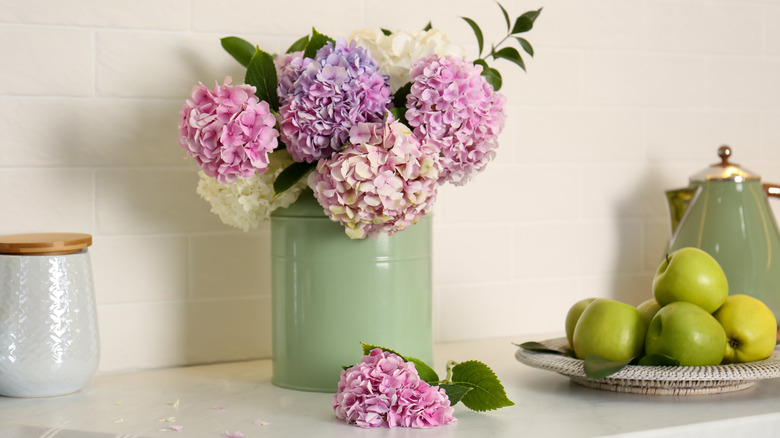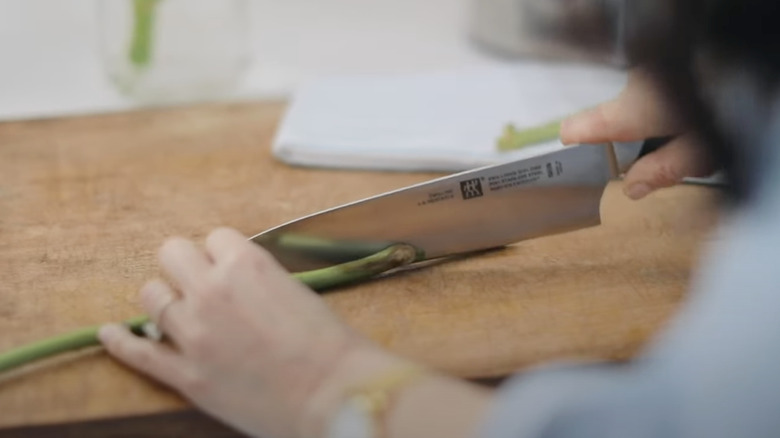How To Revive Wilting Hydrangeas To Enjoy Fresh Blooms Longer
A bouquet of hydrangeas (Hydrangea macrophylla) is a sight to behold — especially with hydrangea varieties coming in pink, blue, purple, and white. Unlike many other flowers that can hold up for days in a vase, however, these drama queens are quick to wilt. But the good news is that, with a little care and patience, you can perk them back up in no time. The secret is to put the flowers in a bowl of cool water for a few hours — because sometimes, all you need is a nice bath, right?
Why do hydrangeas wilt so quickly? Well, the name itself might give you an idea. Hydrangea comes from the Greek words "hydor" (water) and "angeion" (vessel) — in other words, a water vessel. The etymology makes sense, considering these flowers are almost always thirsty. This mainly has to do with the fact that hydrangea stems make it hard for water to reach the flowers.
When you cut the stems, they produce a form of sap as a way of healing themselves. This sap acts as a seal that blocks water from entering the stem. As a result, the flowers begin to wilt just a couple of hours after you cut the stems and place the hydrangeas in a vase with other flowers. And of course, what good is a bouquet of flowers if they get all droopy before you even get the chance to enjoy them? But as long as you act fast, you can get your cut hydrangeas back looking fresh and pretty again. Now, if it's your potted hydrangeas that are wilting, that's a different story.
Bringing your wilted hydrangea flowers back to life
To revive your wilted hydrangeas, start filling a bowl, bucket, or sink with cool water. Cut an inch off the bottom of the stems at a deep angle, and put the flowers entirely in the water. You may also want to get rid of the leaves, regardless of how great they look in the bouquet. This allows all the water to go to the flowers rather than most of it going to the leaves.
Keep your hydrangeas submerged for at least an hour or two. The more they're wilted, the longer you'll want to soak them. You can also leave them overnight if they don't bounce back after a couple of hours. This trick works because hydrangeas absorb water through the flowers — and are one of the very few flowers that can do so. Make sure not to try it with flowers like roses and tulips. They'll just end up rotting faster.
To prevent freshly cut hydrangeas from wilting in the first place, boil some water and make vertical slits at the bottom of the stems. You can also smash the bottom ends of the stems so they absorb more water, but this is optional. Next, hold the hydrangea stems in the hot water for half a minute, and move them to cooler water. This method dissolves the sap so it doesn't clog the stem when you place it in the vase. Another way to neutralize sap is by dipping the bottom ends of the stems in alum powder. Change the water every day, and you'll be enjoying your hydrangea blooms longer.

